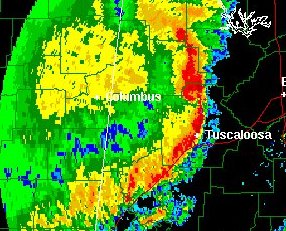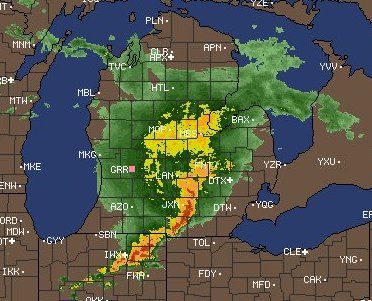
Bow echoes, when they occur, usually occur with a grouping of multicell storms that are arranged into a squall line. The upper tropospheric winds steer storms. These winds help determine the speed and direction that the storms move. The upper tropospheric winds will not always be constant along a squall line. In the regions these winds are stronger that portion of the squall line will surge forward. Also, in regions these winds are drier that portion of the squall line will surge forward because evaporative cooling creates negative buoyancy that will further accelerate a downdraft toward the surface. Since the downdraft from a squall line approaches the earth's surface at an angle, the faster the downdraft winds the faster the storms may migrate forward. Below is an example of a bow echo: BOW ECHO  The next example is that of a bow echo with a line-end vortex on the north side of the squall line: LINE-END VORTEX 
|